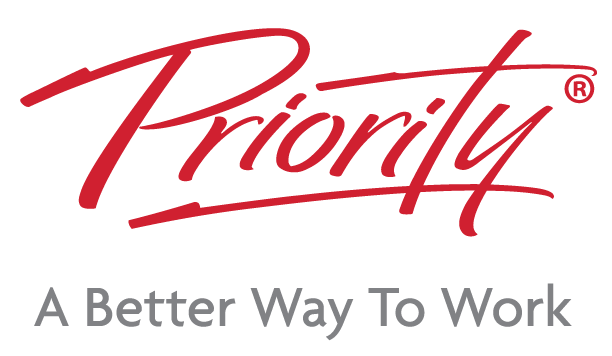If you’re feeling overwhelmed juggling work, study, childcare, maintaining a home and having a social life, you’re not alone. More than half of all Australians rate their work-life balance as average or poor as they struggle to juggle their personal and professional responsibilities.
Mastering time management can help you achieve a healthy work-life balance, improve your mental health and allow you to focus during your productive hours. In this article, we introduce you to a time management technique that you can apply across all areas of your life. It’s called the 7-8-9 rule, and it will help you work smarter, not harder.
What are the Benefits of Time Management?
Time management is the act of controlling how you spend your time so that you become more efficient and productive. People with good time management skills can effectively split their time between work, their personal life and other important tasks.
Effective time management will make you more focused, reduce stress, give you more free time, and help you achieve your goals.
One way to overcome poor time management is to incorporate the 7-8-9 rule into your daily routine, so let’s look at how it works.

What Is the 7-8-9 Rule?
The 7-8-9 rule is a simple framework to help you balance your day. It suggests that you should set aside 7 hours each day for work or study and 8 hours for sleep, which leaves you with 9 hours of personal time. It reflects the need to balance time across work, leisure and sleep, helping you stay well-rested, support your mental and physical well-being and maintain full focus when working or studying.
Why the 7-8-9 Rule Works
The 7-8-9 rule works because it’s an effective way of achieving balance between rest, work and play. Research shows that effective time management leads to increased productivity and performance at work. There are even studies that show how a good work-life balance can help boost motivation among employees, leading to higher engagement and greater job satisfaction.
Time management statistics show that the vast majority of people waste time at work. This can range from a few minutes up to 3 hours a day. This is often due to inadequate rest, which makes it hard to focus, and the inability to take regular breaks to rejuvenate your body and mind. Taking breaks and prioritising sleep isn’t just healthy, it’s linked to boosted focus and workplace performance.
When people struggle with work-life balance, they suffer from burnout. They feel less engaged, are less productive and more likely to make errors. And that’s just in a professional setting. The inability to manage time effectively and achieve this sense of balance also takes a huge toll on people’s personal lives.
How to Apply the 7-8-9 Rule to Your Day
Here are some tips to help you schedule 7 hours of productive work, 8 hours of restorative sleep, and 9 hours for everything else, such as sports, cooking, socialising and family time.
- Getting enough sleep can boost productivity. Establish a regular bedtime, limit social media use and use meditation techniques for a good night’s sleep.
- Frequent breaks prevent burnout and help you stay focused. When working or studying, take a short break every 1-2 hours or in between tasks.
- Set firm boundaries. Avoid answering emails or taking phone calls outside dedicated work hours.
- Tackle the most important tasks first. This technique also applies during leisure time so that you can focus on relaxing or enjoying hobbies without worrying about tasks you haven’t attended to.
- Time tracking is a valuable tool. It can highlight lost time in your day, helping you to improve your habits.
- Group similar tasks together. This is known as task batching, and it reduces mental load and minimises distractions.
- Avoid multitasking. Pick a specific task and get it done. Multi-tasking is stressful, it limits creativity, and it makes you less productive.
- Downtime is crucial for recharging. Use your 9 hours a day to maintain a healthy lifestyle, rest and connect with loved ones.
Sample 7-8-9 Schedule Template
Full-Time Office Worker on a 9-5 Schedule

Techniques to help manage your time during study sessions or work hours
These time management tips are the sorts of techniques you can learn more about during a time management training course with Priority Management. They will help you maximise productivity during the hours you’ve set aside for work each day.
Pomodoro Technique
This time management technique recommends short bursts of work, usually around 25 minutes, followed by short breaks of 5 minutes or so. It aims to avoid burnout by breaking tasks down into achievable goals.
The Eisenhower Matrix
This is a system of categorising different tasks by priority. It uses four categories: urgent tasks, scheduled tasks, those that can be delegated and those that can be deleted.
Pareto Principle
The golden rule of this principle is to identify the 20% of tasks that contribute to 80% of the results to help you work efficiently to reach desired outcomes.
GTD Method
The Getting Things Done method is a way to manage your time by reducing mental clutter. It requires planning ahead with schedules and using to-do lists to free the mind to focus on one task at a time.
Common Challenges & How to Overcome Them
One common challenge we at Priority Management hear about during our time management training courses is difficulty in sticking to a plan. If you struggle to stick to a routine, aligning tasks with your energy levels may be a better way of tackling work or study. We think it’s the ultimate productivity hack.
 Another common challenge is having an unpredictable schedule. Perhaps you’re a shift worker, a parent or a carer. While an unpredictable schedule can make it difficult to accomplish everything you need to in a day, learning to be flexible, building buffer time into your schedule, delegating where possible and working in short intervals can help you tick off all the different tasks you need to within a week.
Another common challenge is having an unpredictable schedule. Perhaps you’re a shift worker, a parent or a carer. While an unpredictable schedule can make it difficult to accomplish everything you need to in a day, learning to be flexible, building buffer time into your schedule, delegating where possible and working in short intervals can help you tick off all the different tasks you need to within a week.
Find Extra Time in Your Day with Priority Management
Whether you’re a professional, a student, or you help others manage their time, you can learn everything there is to know about the 7-8-9 time management rule and other techniques with Priority Management.
We’re your trusted leaders in workspace solutions and run online and in-person training courses that can help you find extra time in your day. Visit our website or call us on 1300 139 126 to learn how.
Frequently Asked Questions
What is the 7-8-9 rule for time management?
The 7-8-9 time management technique advocates for 7 hours of productive work, 8 hours of sleep and 9 hours for everything else, including relaxation, hobbies and preparing meals.
How can time management be applied?
Some simple ways to apply time management techniques include scheduling and prioritising tasks, using tools to understand how you currently spend your time, setting realistic goals and not procrastinating.
What are 7 essential time management strategies for a student?
The 7 most essential time management tools students can employ are creating a schedule, prioritising tasks, dividing complex projects into smaller parts, avoiding procrastination and eliminating distractions, taking breaks and setting firm boundaries.
What is one-to-one time management?
One-to-one time management involves tackling the most important jobs first and concentrating on only that one task. One-to-one is the opposite of multitasking, where you complete several tasks at once.
